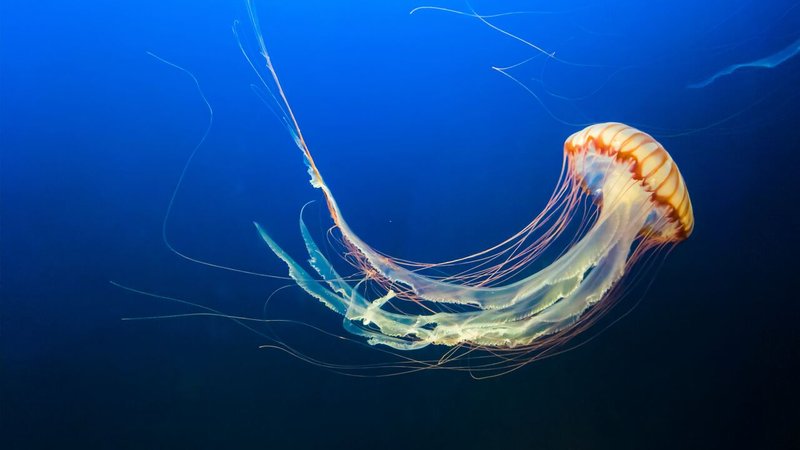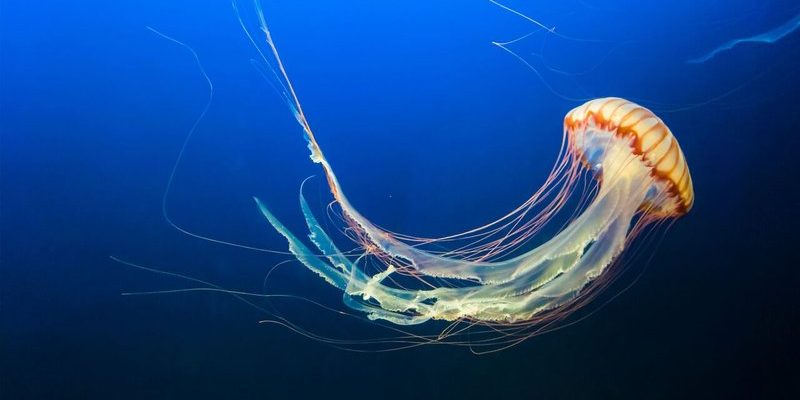
Think of jellyfish like the canary in the coal mine—when they’re struggling, it often signals larger issues in the ocean’s health. Just as we rely on that little yellow bird to tell us when things aren’t right underground, jellyfish can warn us about the challenges our oceans face. So, what exactly are the common threats to these intriguing marine animals? Let’s dive deeper into the world of jellyfish and uncover the dangers that threaten their existence.
Climate Change and Rising Ocean Temperatures
One of the major threats to jellyfish is climate change. As temperatures rise, so do ocean temperatures, changing the environments where jellyfish thrive. Most jellyfish prefer warm waters, which means warmer oceans can actually create conditions that allow jellyfish populations to explode in certain regions.
But here’s the catch: not all jellyfish species can adapt to rapid temperature changes. Higher temperatures can disrupt their reproductive cycles and alter their food sources, like zooplankton, which is a primary food for many jellyfish. If these changes become too extreme, they could negatively affect jellyfish numbers and the ecosystems that depend on them.
Additionally, warmer waters can lead to more frequent and severe algal blooms. These blooms create dead zones in the ocean, making it hard for many marine species to survive. Jellyfish, however, often thrive in these low-oxygen environments, which can lead to their increased presence, altering local ecosystems dramatically.
Pollution and Plastic Debris
You might be surprised to learn that pollution significantly impacts jellyfish populations. Plastics and other wastes in the ocean can threaten their health and habitat. Jellyfish are known to ingest small plastic particles, mistaking them for food. This can lead to serious health issues or even death when they get trapped inside their bodies.
Moreover, pollution can lead to nutrient overload in coastal waters. When excess nutrients wash into the ocean—often from agricultural runoff—it can create harmful algal blooms. While jellyfish can benefit from some of these blooms, the overall impact on marine environments is generally negative. The blooms can deplete oxygen in the water and kill off other species that rely on healthy ecosystems, which can indirectly affect jellyfish populations as well.
To make matters worse, toxic substances in the water can harm not only jellyfish directly but also their prey. If the food chain becomes disrupted, jellyfish could find themselves struggling to find their main food sources, which can lead to population declines.
Overfishing and Habitat Loss
Overfishing doesn’t just impact the target species; it can have significant ripple effects throughout the entire marine ecosystem. Many fish that jellyfish rely on for food—like small fish and larval forms—are being overfished, which means less food for jellyfish. When the balance of predator and prey is disrupted, jellyfish can sometimes become more numerous, as there are fewer fish to keep their populations in check.
Additionally, habitat destruction from human activities like coastal development, bottom trawling, and pollution can significantly impact jellyfish populations. As their natural habitats change and degrade, they might struggle to find appropriate environments to thrive. Coral reefs, for example, are essential for many marine species, including those that jellyfish depend on. When reefs are damaged, the entire ecosystem suffers, making it harder for jellyfish and other marine organisms to survive.
Jellyfish can also benefit from disturbed environments. When coastal habitats are damaged, jellyfish can take advantage of the new conditions, proliferating in areas that may not have been suitable before. This phenomenon can sometimes lead to “jellyfish blooms,” where their populations explode, causing issues for fishermen and marine life alike.
Invasive Species and Competition
Invasive species are another challenge for jellyfish. These are non-native species that, when introduced to a new environment, can spread rapidly and disrupt local ecosystems. For example, some invasive jellyfish species can outcompete native jellyfish for food and habitat. This competition can lead to declines in native jellyfish populations, disrupting the natural balance of the ecosystem.
It’s not just other jellyfish that pose a threat, either. Invasive fish and other marine animals can also compete for the same food sources. If an invasive species is particularly good at finding food or reproducing quickly, it can push out native jellyfish populations, leading to further ecosystem decline.
Unfortunately, humans often contribute to the spread of invasive species through shipping and fishing practices. Ballast water from ships can transport invasive organisms to new locations, where they can wreak havoc on local ecosystems. Understanding this issue can help us manage our marine environments better.
Ocean Acidification
Here’s the thing about our oceans: they’re becoming more acidic due to increased carbon dioxide (CO2) emissions. Ocean acidification affects marine life in various ways, and jellyfish are no exception. While jellyfish are relatively resilient, the long-term effects of acidification could disrupt their life cycles, impair developmental stages, and impact their overall health.
For instance, the larvae of some jellyfish species may struggle to develop properly in more acidic waters. Acidification can negatively impact the availability of their food sources—like plankton—by affecting other marine organisms within the food web. If jellyfish can’t find enough food due to these changes, it could lead to population declines.
Additionally, as the ocean becomes warmer and more acidic, the overall health of marine ecosystems diminishes. Healthier oceans generally support a wider range of marine life, and if jellyfish populations are thriving at the expense of other species, it can lead to an imbalance that further exacerbates the challenges they face.
Human Activities and Coastal Development
Human activities have a profound impact on marine ecosystems, and jellyfish habitats are no exception. Coastal development—such as building hotels, marinas, and other infrastructure—can disrupt the natural environments that jellyfish and other marine organisms rely on. As coastal areas are developed, nurseries for fish and other marine life are often destroyed, further impacting the food web.
In addition to development, recreational activities and tourism can also contribute to jellyfish threats. Increased boat traffic can damage natural habitats, while pollution from human waste and litter can impact water quality. The disruption of natural habitats can pose serious challenges for jellyfish, pushing them into areas where they might struggle to survive.
Interestingly, while jellyfish face many threats from human activities, they can sometimes thrive in areas impacted by coastal development. Their ability to adapt to various conditions often allows them to proliferate in areas where other species may struggle. However, this does not eliminate the fact that the overall health of marine ecosystems needs attention to ensure that jellyfish, and all marine life, can thrive in a balanced environment.
In summary, jellyfish face a multitude of threats in the wild, ranging from climate change and pollution to overfishing and habitat loss. Each of these factors plays a significant role in the health of marine ecosystems. Understanding these threats can help us appreciate the delicate balance of ocean life and the critical role jellyfish play within it.
While jellyfish might seem resilient and adaptable, their increasing populations often signal underlying issues in our oceans that need urgent attention. By addressing pollution, overfishing, and habitat destruction, we can create healthier environments for jellyfish and a vast array of marine life. After all, a thriving ocean benefits everyone, from the smallest plankton to the largest whales—and yes, even the jellyfish that float gracefully through the waves.

